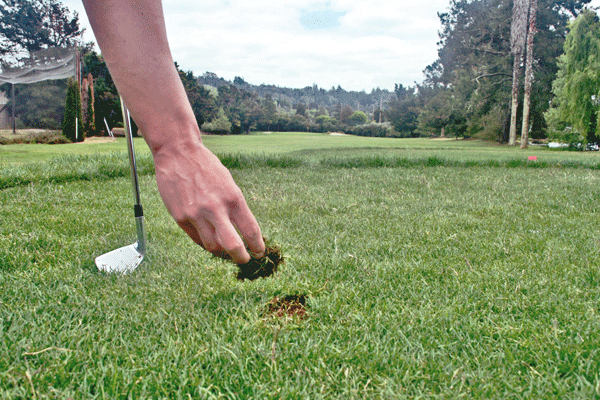On the golf course, it doesn’t matter who you are or where you come from. Once you pay your green fee and step inside the ropes, you’ve entered a shared space, and whether you realize it or not, opted into a collective action agreement — a sacred pact dating back centuries. Everybody must do their part to avoid the “Tragedy of the Commons” and preserve the beauty and sanctity of the golf course.
Some of these obligations are maintenance responsibilities, which include replacing divots, fixing ball marks, and raking bunkers. Imagine how poor the conditions would be if no one did their part. Greens would be bumpy and covered in ugly dead spots, the fairways littered with divots, and the bunkers unplayable wastelands of ruts and footprints. Like a camping trip or a beach day, good stewards leave no trace of their visit.
In addition to course maintenance, the collective action agreement also obligates golfers to follow certain rules of etiquette. While golf is an individual sport, it is played in the company of others. On the first tee, golfers shake hands with one another and wish each other a good round. They stand very still and quiet while others are playing their shots. On the green, they are careful not to walk across other players’ lines. Golfers never root for another player to mess up. This is a lesson that I teach my juniors right away — beat the course, not other players.
If you are an inherently competitive person, it is easy to become caught up in your own game and let your behavior and actions interfere with those around you. From the PGA guide on course etiquette, “Displays of frustration are one thing, but outbursts of temper are quite another. Yelling, screaming, throwing clubs or otherwise making a fool of yourself are unacceptable and, in some cases, dangerous to yourself and others.” It’s also worth noting that such displays do nothing to improve your game.
Pace of play is an important component of etiquette and often an area of contention on the golf course. Much like driving on Highway 9, in golf, you can only go as fast as the person in front of you. Because of this, the collective action agreement requires golfers to either keep pace with the group ahead, or let faster groups play through. There are many actions golfers can take to avoid slow play.
Arrive at the course at least ten minutes prior to your tee time, so you can begin on time. Move at a reasonable pace between shots. Walk directly to your ball and be ready to play when it is your turn. One of the biggest time wasters I see is golfers taking excessive practice swings. Limit yourself to one or two. It should only take 30 to 45 seconds from the time you select your club until you hit the ball.
As you approach the green, leave your equipment in a place that is in route to the next hole and grab only the clubs you need to finish the hole. Once everyone is on the putting surface, the player whose ball is closest to the hole removes or tends the flagstick. The first person who makes their putt should pick up the flagstick and be ready to place it in the cup after everyone has finished.
Mark Twain called golf “a good walk spoiled” and it can certainly seem that way if you are uncomfortable with how to behave on the course, or feel like you’re being rushed. But if you take a step back from your own game to gain perspective on how your actions are part of the collective whole, it becomes much easier to find your place and your pace on the course.













